Beyond the cookie
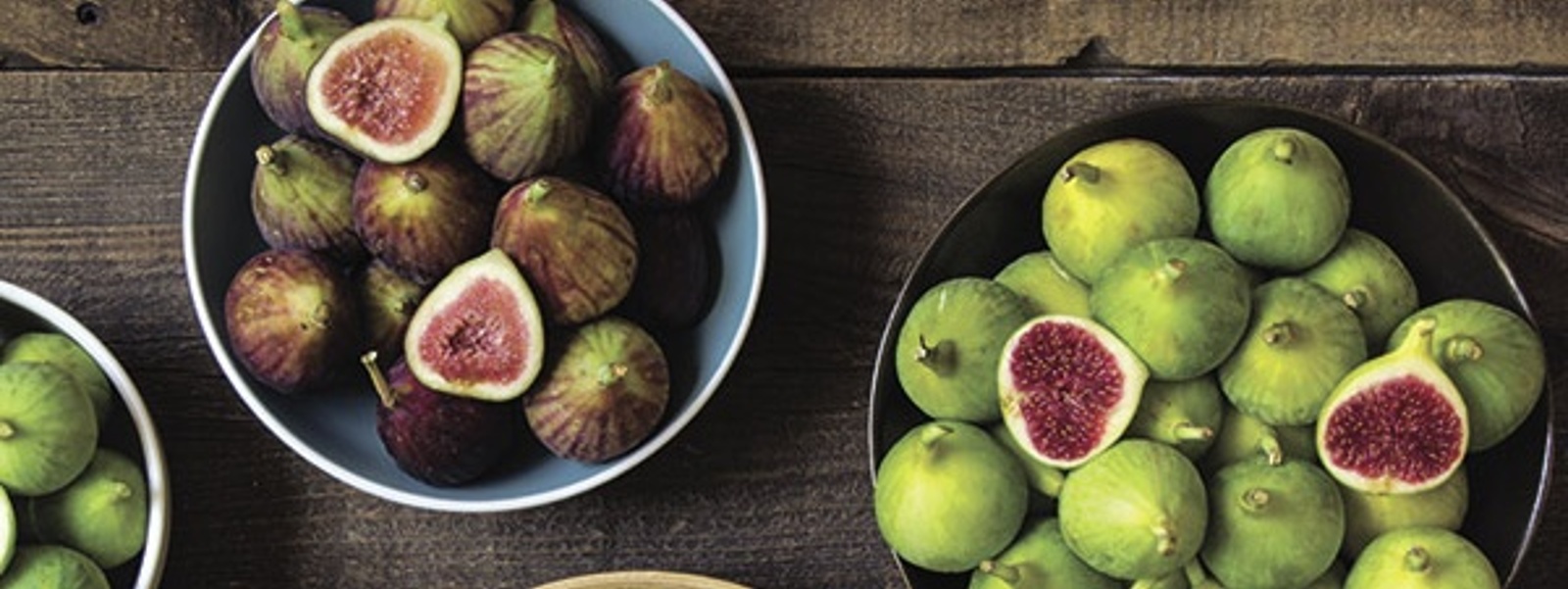
Summer 2025 California Bountiful magazine

California figs are being used in fresh new ways
Story by Ching Lee
Farm photos by Christian Parley
Fig photos courtesy of the California Fresh Fig Growers Association
With figs in peak season, shoppers owe it to themselves to seek out the fresh version of a fruit they most likely associate with a filling for a certain type of cookie.
Most California figs still end up as dried fruit, the bulk of which is turned into paste and other food ingredients. But the fresh form—with its sweet, honeyed flavor and jam-like center—is increasingly showing up in fresh culinary takes on familiar dishes.
“We’re really trying to liberate the fig from the Newton,” says Karla Stockli, CEO of the California Fresh Fig Growers Association and the California Fig Advisory Board.
There has been progress elevating figs, she says, thanks in part to innovations in packing the delicate, tear-shaped fruit. Foodies have also helped raise its profile as more chefs and adventurous cooks use fresh and dried figs in their cuisines.
Although fresh figs used to be “more of an ethnic kind of product” popular with certain cultures, particularly those in Mediterranean countries, they have become more common in American stores rather than as just a novelty, says Madera County grower Steve Schafer. With TV cooking programs preparing figs to showcase the fruit’s color, texture and flavor, figs are now “very accepted,” he adds.
“It fits very well into this movement where everybody is cooking and making food a very important part of their life, and figs are great for that,” Schafer says.
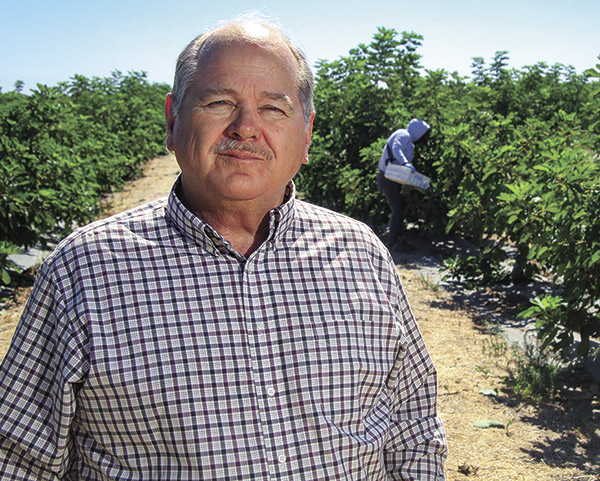
Exploring culinary possibilities
For those trying fresh figs for the first time, the stem is all that needs to be removed. From there, pair figs with different cheeses on a charcuterie board and a favorite sparkling wine. Add texture and sweetness to savory dishes such as stir-fry, or grill figs and a soft cheese such as Gorgonzola wrapped with strips of prosciutto for an appetizer. Figs also break down nicely in tomato sauce with onions, parsley and other herbs.
Once washed, fresh figs freeze well for months “without the freezer taste,” Stockli says, making them ideal for smoothies.
Perhaps her favorite way to use fresh figs is on grilled pizza or flat bread topped with arugula, prosciutto and caramelized onions brushed with olive oil.
“It's just a small, delicious bite,” Stockli says.
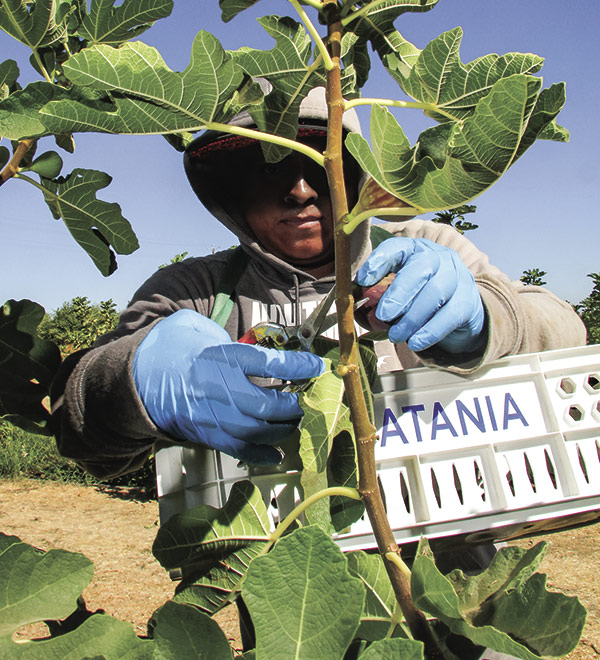
Harvest peaks in summer
California farmers remain the nation’s top producer of fresh and dried figs. Fresh figs are most plentiful from mid- to late summer, when farmers harvest their main crop, though first pickings—also known as the “breba crop”—come as early as mid-May. During harvest season, the trees continually produce fruit, with farmers picking their orchards three to five times.
As fresh fig season begins to wind down in October and November, dried figs serve as a “bridge,” Stockli says, allowing cooks to use figs in holiday meals and baking.
Figs dry naturally on the tree and then fall off. The dried fruit is then swept into bins destined for sorting yards. Some of it is packaged and sold as whole dried figs, with the rest marketed as ingredients.
Farms that produce dried figs typically stop watering their trees in September to facilitate drying. Schafer, who grows only fresh figs, continues to irrigate to keep the trees green, so he can pick fresh fruit until the end of October. He considers himself a relative “newbie” to the fig business, having planted his trees about 11 to 13 years ago.
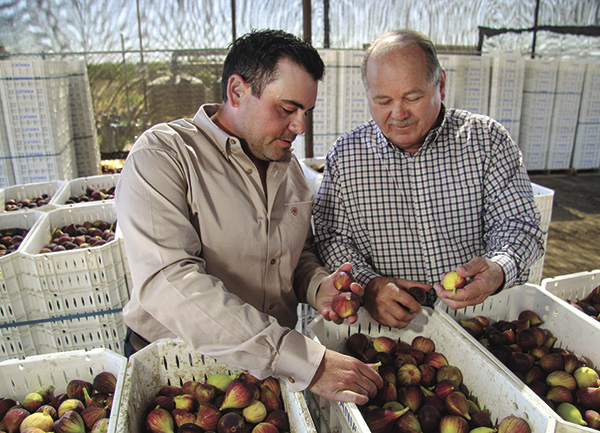
Farmers adjust to trends
Though demand for figs is up, state plantings have fallen through the years, hitting a low of about 6,000 acres in 2022, when farmers were forced to remove trees due to drought. Growers also exported less dried fruit overseas during the COVID pandemic due to shipping disruptions, Stockli says. As a result, figs from Middle Eastern countries, especially Turkey—the world’s leading fig producer—took more shelf space, displacing California dried figs and fig ingredients.
California farmers are planting more trees to meet growing demand, Stockli notes, and younger trees are coming into production. Bearing acreage in recent years stood at around 8,500, which is more in line with where the industry was in 2008, when there were 8,394 acres of figs in the Golden State.
Still, it’s a far cry from nearly 30 years ago, when state plantings topped more than 16,000 acres.
Erik Herman, whose family grows figs in Madera, Merced and Fresno counties, says he used to see “groves of fig trees” in Fresno during his childhood. Now those orchards are houses and other developments.
Despite the shrinkage, Herman says growing demand for fresh figs has prompted his farm to plant more trees in recent years. With about 3,800 acres, his family remains the state’s largest fig grower, producing fresh and dried figs. His father, Kevin Herman, started growing the fruit about 40 years ago, before the younger Herman was born.
“Popularity and different uses of figs have continued to grow over time, and I think it’s moving our industry in the right direction,” Herman says.
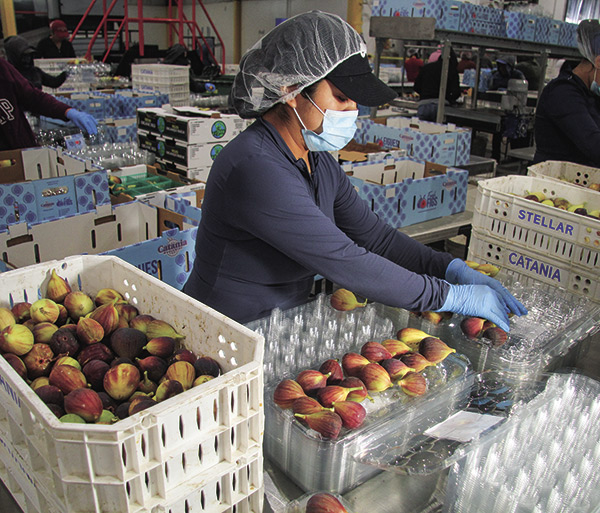
Dried fruit serves diverse roles
Although fresh figs used to be available mostly in specialty grocers, more traditional retailers carry them now, Herman points out. Stockli says the grower association has been working to get more retailers on board. Costco, Trader Joe’s, Whole Foods and Raley’s typically have them during the season, she notes, though she acknowledges other traditional retailers still don’t.
For the dried fruit, the industry has been working with product developers, niche manufacturing companies and food technologists, providing them with fig ingredients that could serve as a sweetener or to replace food coloring, so they could make a more nutritious product, Stockli says. Dried figs are now found in sauces, meal kits and confections, especially in baked goods.
Four California companies make dried figs: San Joaquin Figs, Fig Garden Packing and Valley Fig Growers—all in Fresno—and National Raisin Co. in Fowler. They produce some 7,400 tons of dried figs annually, but very little of it is used in Newtons, now owned by Mondelez International, which makes the cookies in Mexico and sources most of its fig paste elsewhere.
California dried figs are finding their way into similar and new products though. For example, the blueberries in Quaker Oats’ instant oatmeal at one time were made with extruded fig pieces infused with natural blueberry flavoring, Stockli notes.
The paste continues to appear in a variety of cookie bars available on the market—and the category has “exploded,” Stockli says, whether food companies use 100% California ingredients or a blend of imports and California figs.
In that way, figs have been liberated, she adds. “We’ve really seen it go beyond the Fig Newton,” Stockli says.
A choice of varieties
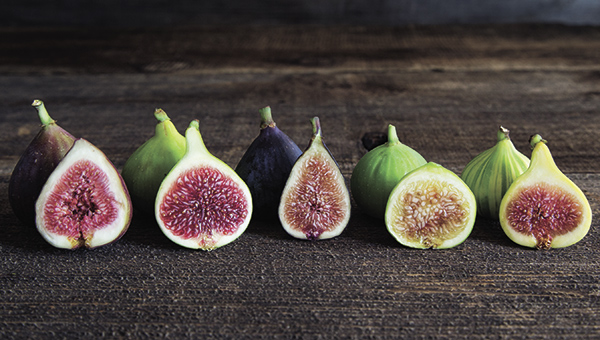
Farmers in the Golden State grow primarily five fig varieties, all of which can pollinate themselves. The Calimyrna, which requires a wasp to pollinate, has largely been phased out, with no commercial production.
Brown Turkey: Available mid-May through November. Brownish-purple skin. Sweet, mild flavor with hints of honey. Sold as fresh only.
Kadota: Available mid-June through October. Greenish-yellow skin. Sweet with subtle berry flavor. Marketed fresh and dried.
Black Mission: Available mid-May through November. Perhaps the most common variety. Purple and black skin. Known for their high sweetness. Marketed as fresh and dried.
Sierra: Available June through November. Light green to yellow skin. Slightly sweet with a delicate nut-like flavor. Marketed as fresh and dried.
Tiger: Available mid-July through November. Light yellow with dark-green stripes. Honey-like sweetness with berry undertones. Sold as fresh only.

